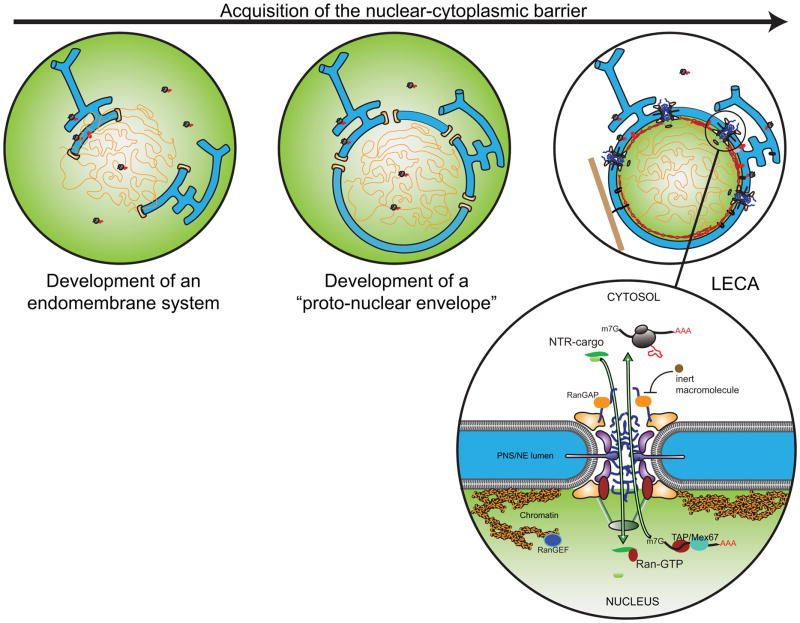Figure 1.
Schematic of likely steps leading to the formation of the nucleocytoplasmic barrier. At left, a primitive endomembrane system (blue) is developed with connections to the genome mediated by membrane proteins and an ancient proto-coatomer (bracket shapes) capable of stabilizing membrane curvature. Ribosomes are grey with red nascent polypeptide. In middle, the protocoatomer provides the building blocks for the NPC architecture, which drives exchange through pores in the “proto-nuclear envelope”. The contents of the nucleus and cytoplasm are not fully segregated until the last eukaryotic common ancestor (LECA; right), which would incorporate the FG-nups into the NPC scaffold, allowing the generation of a size-selective diffusion barrier and active nuclear transport mediated by NTRs (green in inset). Inset of NPC showing the major architectural units including the inner rings (purple), outer rings (orange), FG-nups (blue squiggles) and nuclear basket (green). Ran-GTP is found predominantly in the nucleus, where it releases import cargoes from NTRs and stabilizes export complexes.

